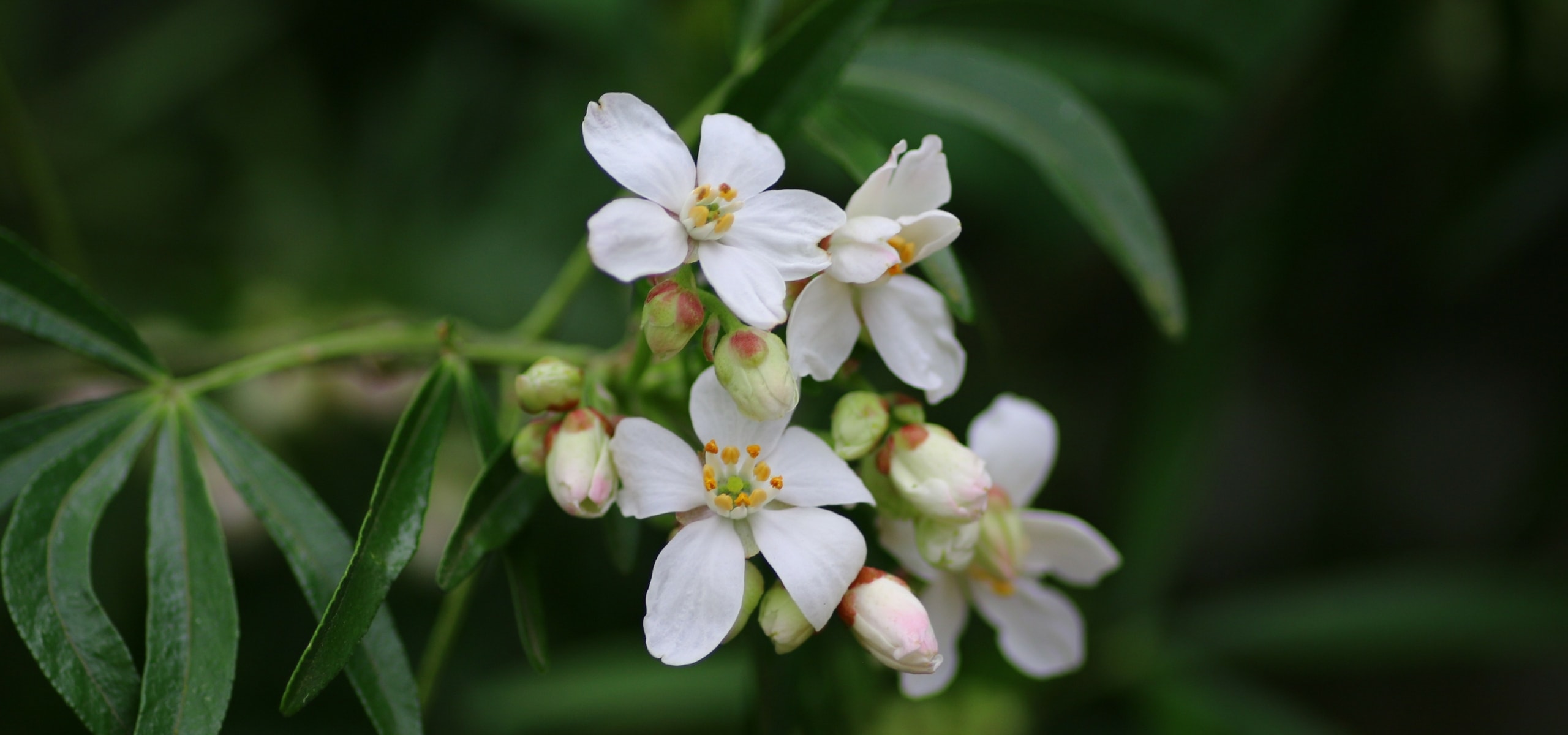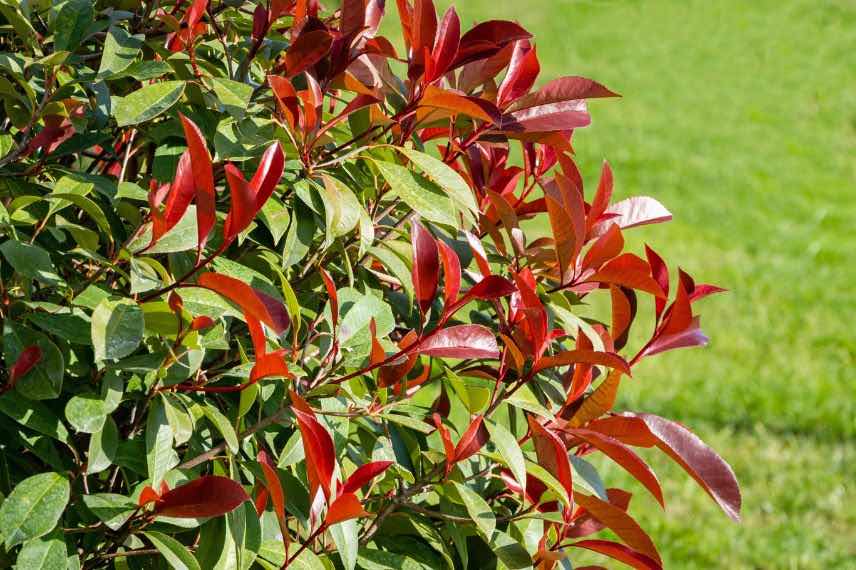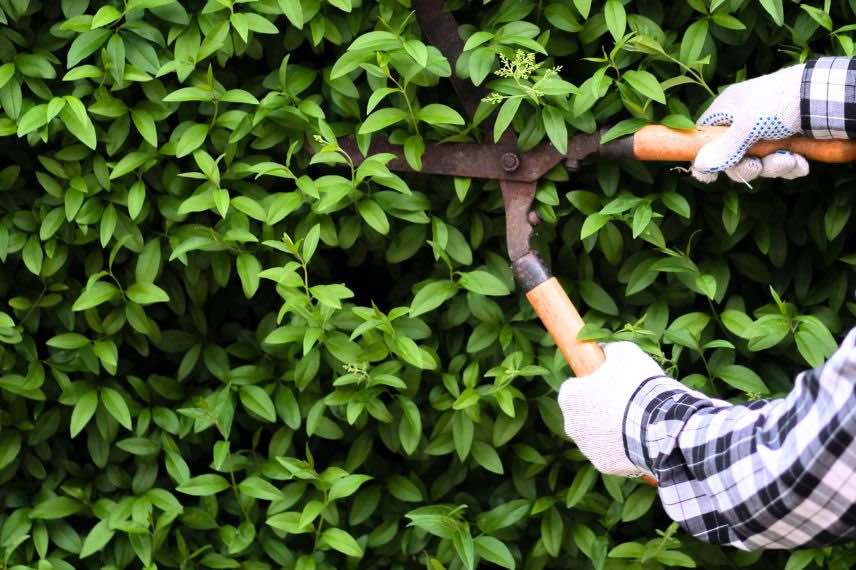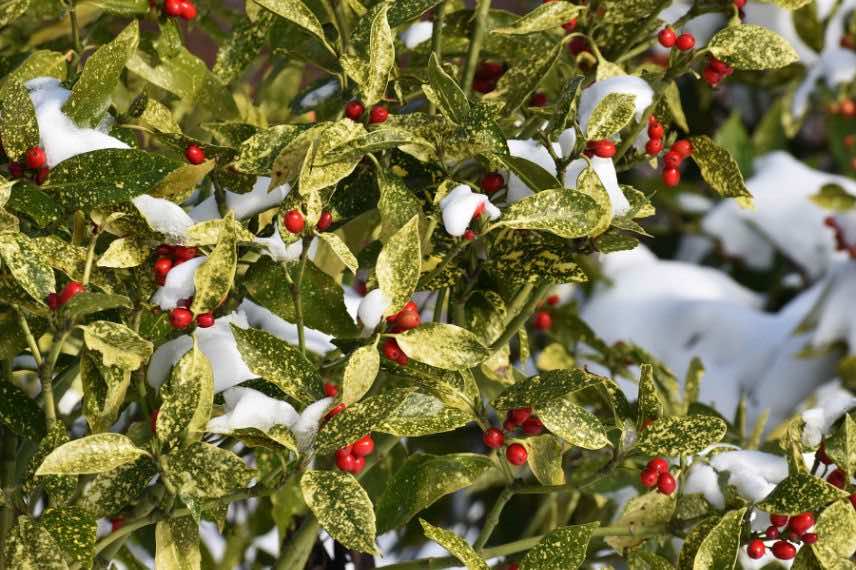
Be attentive to evergreen bushes
Discover how to prune and care for them.
Contents
The evergreen bushess, such as laurels, boxwood, photinia, pieris, or even camellia are the cornerstones of a garden that remains vibrant and colourful even in winter. These plants, which retain their leaves all year round, provide structure and continuity to your green space. However, to keep them dense and well-formed, it is important to prune them regularly and provide the appropriate care. Discover how to care for these precious evergreen bushes to keep them in top shape and enhance your garden in all seasons!

When to prune evergreen bushes?
The best time to prune an evergreen bush depends on the variety, but generally, you can prune:
- Late winter – early spring: once the severe cold has passed, prune the blackened, damaged, or broken branches. This cut will stimulate new growth in spring and allow the bush to regain a nice shape. It is also the ideal time for bushes that flower in summer, as this encourages new growth just before the flowering season.
- After flowering: for those that flower in spring, it is better to wait until the end of flowering to avoid cutting the flower buds.
- In autumn: light pruning is possible, but severe pruning should be avoided before winter to prevent weakening the bush against frosts. You can also carry out a second pruning in August-September for vigorous bushes, such as Photinia, to regulate their growth. The new shoots will turn red in autumn, adding a splash of colour.
Read also
Evergreen tree and shrub: what are they?How to prune them?
- Remove dead wood: start by removing dead or diseased branches by cutting them at their base. This aerates the bush and limits the risk of infection.
- Reduce overly long branches: cut branches that extend beyond the desired shape of the bush. Prune just above a bud or leaf node to encourage harmonious regrowth.
- Refine the shape: remove branches that cross or grow inward. This allows light and air to circulate properly, which is essential for a healthy bush.
- Balance the density: for some evergreen bushes like laurel or boxwood, it may be helpful to slightly thin the density of the branches to prevent the bush from becoming too bushy.
Specifics by variety:
- Oleander: Oleander flowers on the wood of the year. To avoid compromising flowering, do not prune too severely. Wait until it is five years old to start pruning, then space interventions every 4 to 5 years. In early spring, cut back all branches by a third, removing dead or poorly placed stems. Wear gloves when handling this bush, as its sap is toxic and can cause skin irritation.
- Mexican Orange Blossom (Choisya ternata): Pruning of the Mexican Orange Blossom is done just after the first flowering in June or after the second, in autumn. Old specimens can be cut back in March to encourage vigorous growth, although they will not flower the following spring after severe pruning.
- Rhododendron: Pruning is generally unnecessary for rhododendron. At the end of summer, you may refresh the bush to maintain a balanced and airy shape.
How to prune evergreen bush hedges?
Evergreen bush hedges, whether tall or low, require regular pruning to maintain a beautiful uniform shape. Prune your hedges once or twice a year, typically at the end of winter (early March) and in autumn (September or October). Avoid pruning during frost or drought periods, as this could stress the bushes and compromise their health.
Examples of pruning by species:
- Viburnum tinus: Prune it after flowering has finished, around the end of March. If you do not prune it, the bush will produce berries, which are beneficial for birds in winter.
- Boxwood and Lonicera nitida: These bushes are often used for low hedges and grow in a disorderly manner from spring. Prune them in spring with a sharp shear to restore their homogeneous shape and refresh them.

Read also
Pruning spring-flowering bushesHow to care for evergreen bushes?
Evergreen bushes generally require less watering than flowering plants, but they still appreciate deep watering during prolonged dry spells, especially in the first few years after planting.
Mulching at the base of evergreen bushes is beneficial all year round. In summer, it retains moisture, and in winter, it protects the roots from the cold. Mulching also limits the growth of weeds and enriches the soil as it decomposes.
At the beginning of spring, applying suitable fertiliser helps bushes to start their growth. Use a special fertiliser for bushes or evergreen plants, avoiding late fertilisations that may weaken the plant against frost.
Monitor your bushes for any potential pests (aphids, scale insects) or diseases (fungi). If necessary, opt for natural treatments, such as black soap or plant decoctions, to preserve the ecological balance of your garden.
In winter, the garden is asleep. Only the evergreen bushes provide us with a comforting touch of greenery. As they remain in growth, they can suffer from winter frosts. Take advantage of this lull in the garden to tend to it. In winter, precipitation becomes scarce, and in some regions, autumn rains have been few. The evergreen bushes are in growth, so they need water. The sunny days in February cause significant evaporation and dry out the leaves. If your soil is very dry, consider watering them during warm spells.
Severe frosts can scorch the branches. The leaves turn grey and dry out. (Aucubas are often affected). The weight of the snow can also break branches, such as those of the Mexican Orange. If the snow persists, remember to gently shake the branches regularly to lighten them.

- Subscribe!
- Contents






























